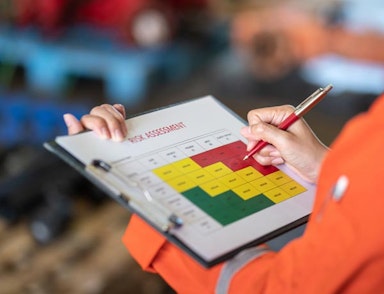Service visits
A consultant will identify the hazards in your workplace and talk you through the risk assessment process.
Rated / 5 based on Google Reviews
View risk assessment services pricing

Every year, Peninsula’s health & safety experts support thousands of small businesses with their risk assessments—from salons and restaurants to law practices and tech companies.
Whenever it's time for your risk assessment, your health & safety expert will give you practical and cost-effective advice on how to remove hazards, reduce risks, and keep your business safe.
Plus, you’ll get access to a suite of online tools that help keep your risk assessment up to date.
Got a question? Check whether we’ve already answered it for you…

